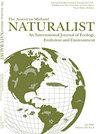Effects of Light and Temperature on Germination of Eggert's Sunflower (Helianthus eggertii)
IF 0.6
4区 环境科学与生态学
Q4 Agricultural and Biological Sciences
引用次数: 0
Abstract
Abstract. Helianthus eggertii is a rare perennial sunflower of barrens and open habitats in Kentucky, Tennessee, Alabama, and South Carolina in the United States (U.S.). Despite its delisting in the U.S. Endangered Species Act in 2005, little is known about the germination biology of H. eggertii other than seeds require cold stratification for optimal germination. Knowledge about the germination biology of rare species can aid in the management of natural populations and inform strategies for ex situ seed conservation and propagation. We examined how cold stratification, light, and temperature interact to affect seed germination in H. eggertii, and whether germination proportions varied among populations. At the time of maturity in October, seeds have primary physiological dormancy and require cold stratification or prolonged (> 8 wk) incubation in light at cool (15/6 C) temperatures to germinate. Seeds maintained a light requirement for germination when cold stratified in darkness, but not after cold stratification in light. However, seeds germinated to lower proportions after cold stratification in light relative to darkness, and when incubated at temperatures that mimic summer (35/20 C) compared to late spring (25/15 C). Germination varied widely among populations (23-58%), with plants from more open sites exhibiting lower germination proportions than those from partially shaded sites. Our results indicate seeds most likely germinate in early- to mid-spring, and light promotes germination of H. eggertii. Our results highlight the interactive role of light and temperature in determining seed dormancy break and germination in H. eggertii.光照和温度对茄子种子萌发的影响
摘要向日葵(Helianthus eggertii)是一种罕见的多年生向日葵,生长在美国肯塔基州、田纳西州、阿拉巴马州和南卡罗来纳州的贫瘠和开放的栖息地。尽管它在2005年从美国濒危物种法案中被除名,但除了种子需要冷分层才能最佳发芽外,人们对鸡蛋芽孢杆菌的萌发生物学知之甚少。了解珍稀物种的萌发生物学有助于自然种群的管理,并为种子的迁地保护和繁殖策略提供信息。我们研究了冷分层、光和温度如何相互作用影响鸡蛋种子的萌发,以及不同种群的种子萌发比例是否不同。在10月成熟时,种子处于初级生理休眠状态,需要低温分层或在低温(15/6℃)下长时间(约8周)培养才能发芽。种子在黑暗条件下冷分层时萌发需要光,而在光照条件下冷分层后萌发不需要光。然而,在光照条件下进行冷分层后,种子的发芽率低于黑暗条件下,在模拟夏季(35/20℃)的温度下孵育时,种子的发芽率低于春末(25/15℃)。不同种群之间的发芽率差异很大(23-58%),来自较开阔地点的植物的发芽率低于来自部分阴凉地点的植物。我们的研究结果表明,种子最有可能在早春至春中期发芽,并且光照促进了卵黄的发芽。我们的研究结果强调了光和温度在决定鸡蛋种子休眠和萌发中的交互作用。
本文章由计算机程序翻译,如有差异,请以英文原文为准。
求助全文
约1分钟内获得全文
求助全文
来源期刊

American Midland Naturalist
环境科学-生态学
CiteScore
1.20
自引率
0.00%
发文量
38
审稿时长
18-36 weeks
期刊介绍:
The American Midland Naturalist has been published for 90 years by the University of Notre Dame. The connotations of Midland and Naturalist have broadened and its geographic coverage now includes North America with occasional articles from other continents. The old image of naturalist has changed and the journal publishes what Charles Elton aptly termed "scientific natural history" including field and experimental biology. Its significance and breadth of coverage are evident in that the American Midland Naturalist is among the most frequently cited journals in publications on ecology, mammalogy, herpetology, ornithology, ichthyology, parasitology, aquatic and invertebrate biology and other biological disciplines.
 求助内容:
求助内容: 应助结果提醒方式:
应助结果提醒方式:


